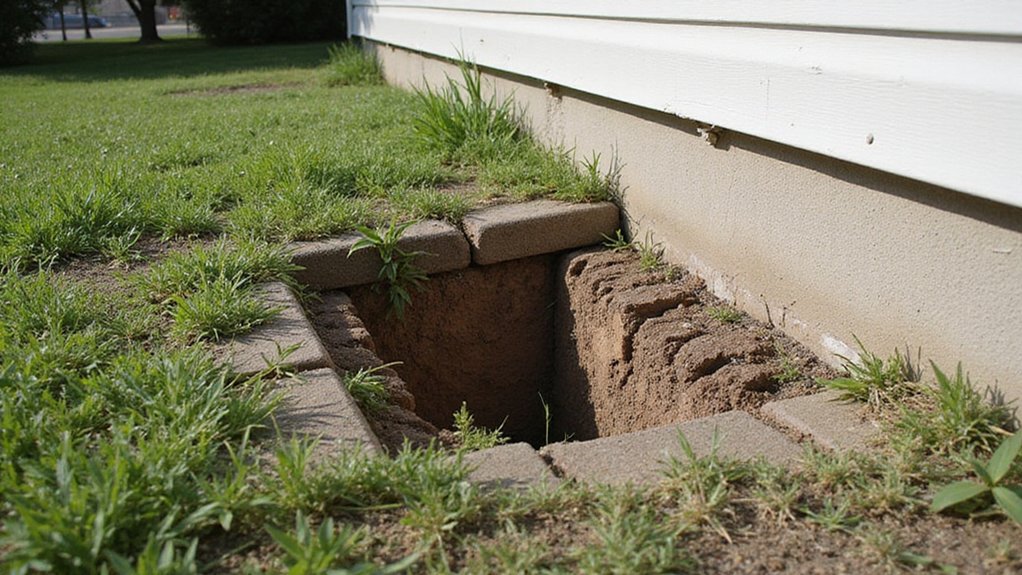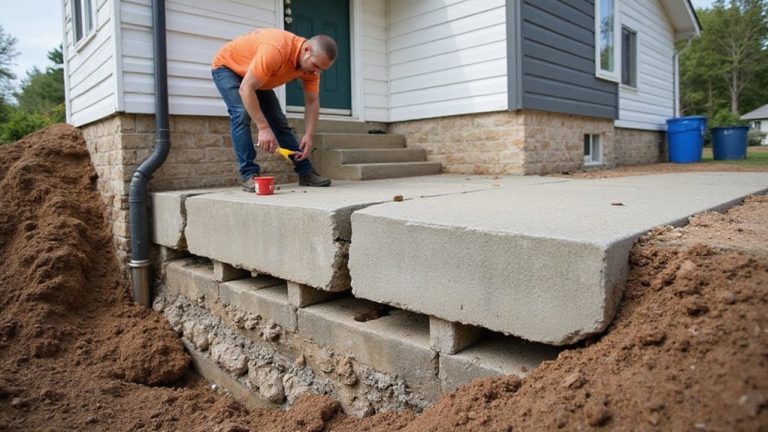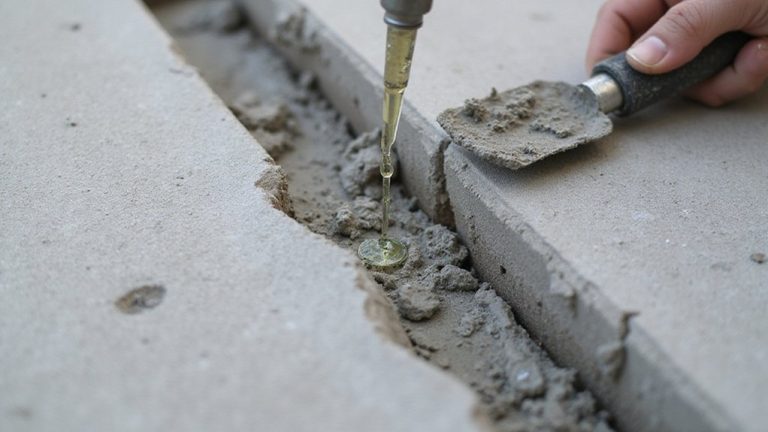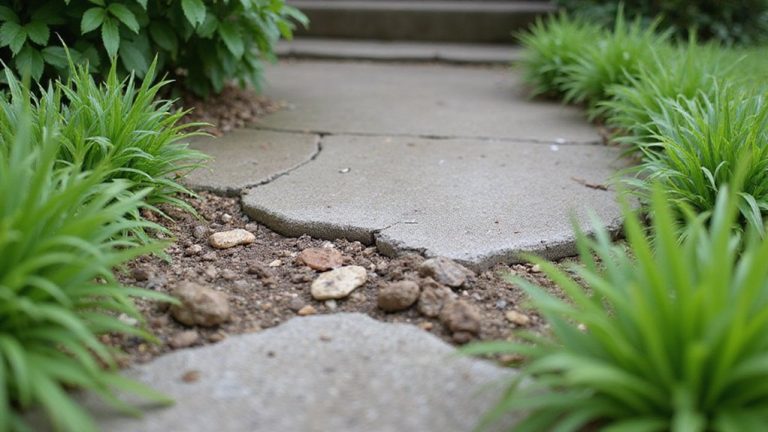Identifying cracks in your home’s walls and floors can be a clear sign of foundation sinking, indicating more serious underlying issues. Uneven floors, sticking doors and windows, and overall instability suggest your foundation is shifting, potentially compromising the structural integrity of your home. Ignoring these warning signs could lead to costly repairs down the line and even decrease your property value. Addressing the root causes of foundation sinking is imperative to maintaining the safety and long-term value of your home.
Cracks in Walls and Floors
One of the most common signs of foundation sinking in your home is the appearance of cracks in your walls and floors. These cracks can start small but grow larger over time, indicating a more serious problem with your home’s foundation. Vertical, horizontal, and diagonal cracks in basement walls or foundation blocks can worsen if the underlying issue is not addressed.
Uneven Floors and Doors
Aside from the unsightly cracks, you may also notice uneven floors or doors that don’t quite fit their frames properly. These issues are common signs of foundation problems, indicating that your home’s structure is shifting. Sagging drywall or gaps around windows and doors can occur as the floors become uneven, altering the alignment of your home’s frame. Sticking windows and doors that no longer open and close smoothly are also telltale signs that your foundation is sinking or settling. Floors that slope or feel bouncy underfoot are another clear indication that your home’s foundation is in distress. Basement waterproofing is often necessary to address the root cause of these issues.
Structural Instability
The structural instability caused by a sinking foundation can be a significant concern for homeowners. As the home’s foundation settles unevenly, it can lead to cracks in the walls, floors, and ceiling.
This structural instability can be exacerbated by soil erosion and moisture buildup, causing further deterioration. Unaddressed, a structurally unstable home poses risks to the safety and integrity of the entire structure.
Identifying and addressing the root causes of foundation sinking, such as poor drainage or expansive soil, is essential to restoring your home’s structural stability and preventing costly repairs down the line.
Damage to Load-Bearing Walls
Because load-bearing walls are critical to your home’s structural integrity, any damage to them can be particularly concerning. Consider these issues:
– Damaged load-bearing beams or walls can lead to uneven settling and shifting of your home’s foundation, compromising its overall stability.
Weakened foundation supports may cause walls to bow, crack, or even collapse, putting your family’s safety at risk.
Ongoing foundation issues can worsen over time, leading to extensive and costly repairs if not addressed promptly.
Addressing foundation problems, including damage to load-bearing structures, is essential to maintaining the health and longevity of your home.
Roof and Chimney Alignment Issues
How might roof and chimney alignment issues affect your home? If your home’s foundation sinks, it can cause the pitch of your roof to change. This can lead to shifting chimneys, making them visually uneven or crooked. Chimney displacement is a common symptom of foundation problems.
A shifted chimney may not properly vent fumes, increasing the risk of carbon monoxide buildup in your home. Uneven roof angles can also allow water to pool, potentially leading to leaks and damage over time. Addressing these alignment issues is vital to maintaining your home’s structural integrity and safety.
Plumbing and Electrical Problems
Sadly, a sinking foundation can also wreak havoc on your home’s plumbing and electrical systems. The shifting ground can:
- Cause water pipe leaks, leading to water damage and potentially mold growth.
- Result in electrical circuit failures, creating safety hazards and disrupting your home’s power supply.
- Compromise the integrity of your home’s wiring, posing fire risks and making it difficult to maintain proper electrical functioning.
These issues can be costly to repair and may even require significant renovations to your home’s infrastructure. Addressing foundation problems promptly is indispensable to prevent further damage and safeguard the safety and livability of your home.
Decreased Property Value
Unsurprisingly, a sinking foundation can also lead to a decrease in your home’s property value. Potential buyers will likely be deterred by the increased maintenance costs and reduced resale appeal of a home with foundation issues.
The cost of repairs can be significant, and the structural instability can make your home less desirable on the market. Additionally, a sinking foundation may raise concerns about the overall condition of the home, leading buyers to offer lower prices or walk away altogether.
Protecting your investment means addressing foundation problems promptly to maintain your home’s value.
Frequently Asked Questions
How Much Does Foundation Repair Typically Cost?
The average foundation repair costs range from $4,000 to $10,000, but financing options are available to help you cover the expenses and maintain your home’s structural integrity.
Can Foundation Issues Be Prevented?
You can prevent foundation issues by taking early prevention measures like annual maintenance checks. This helps identify and address problems before they escalate, ensuring your home’s structural integrity and your family’s peace of mind.
How Long Does Foundation Repair Take?
The foundation evaluation timeline and structural analysis duration typically take 2-4 weeks. This thorough process guarantees your home’s stability and safety, so you can feel assured in your property’s foundation.
Will Insurance Cover Foundation Repair Costs?
Your insurance policy may cover foundation repair costs, but it depends on your eligibility requirements. Check your policy to see if it includes coverage for foundation issues and what steps you’ll need to take.
How Often Should a Home’s Foundation Be Inspected?
Your home’s foundation should be inspected annually to monitor structural stability indicators and assess soil conditions. Regular inspections help secure your home’s safety and prevent costly repairs down the line.



